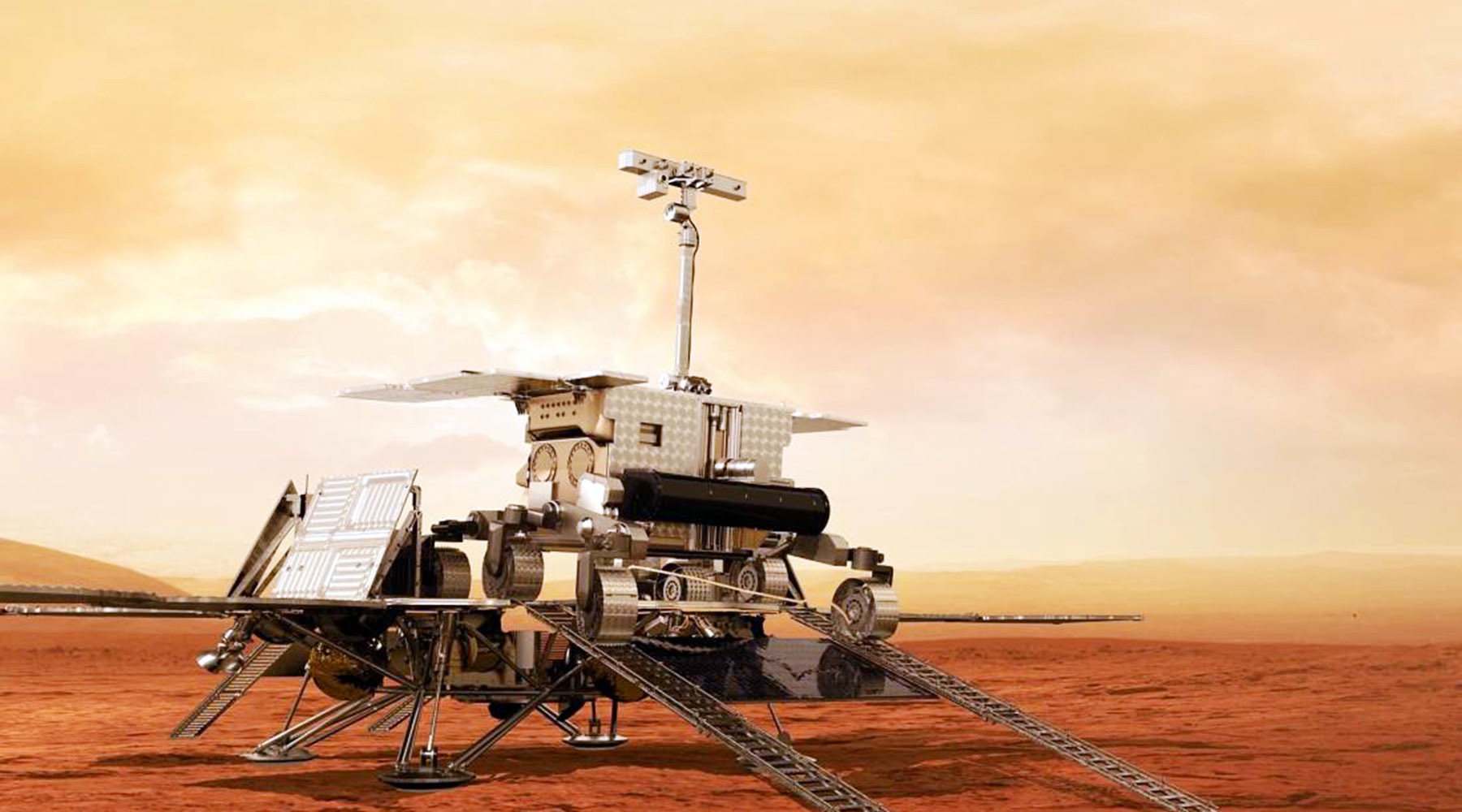- Tell us about the work of the Spectrum RG observatory, which entered orbit at the end of October 2019.
- The Spectrum RG Observatory began a review of the entire sky on December 8th. By mid-summer, we will have to finish the first review. We will receive a map, which later may not be published, but the first data for scientists will appear. It will be clear what the sky looks like in one review of the Spectra-RG.
Every day new data comes in, in search of bright, interesting objects, we look through new fields and sources. Now all the equipment is functioning successfully, the plate in Ussuriysk transfers the data received from the observatory to the institute MCC. We hope to get the first full sky map in six months. In four years of review, there will be eight such reviews. Spektr-RG works, and it’s very cool.
- Spectrum RG Observatory
- © Space Research Institute RAS
- What other projects are planned for next year? It was reported that in 2020, Roscosmos plans to test the Kazachok landing platform, an amphibious module designed for the ExoMars 2020 international Martian mission with Russian participation.
- Around mid-July, the launch of ExoMars 2020 is planned. This is the next mission to Mars after the ExoMars-2016 mission, during which the landing module unsuccessfully landed. In orbit there was an apparatus that now flies around Mars. There are four devices on it, two of which were made by Russian scientists at the Space Research Institute, and they function perfectly. Researchers write scientific articles, this year two articles were published in the journal Nature according to data obtained from our devices.
ExoMars-2020 - joint European-Russian mission. Russia provides a launch vehicle, a descent vehicle and a landing module - an automatic Martian station. This project is important from a technical, scientific and political point of view. We were very worried: will we manage to make all the devices?
Currently, all Russian equipment is located in Europe, a joint technological assembly of the project is underway. Russia fulfills its obligations, it managed to deliver everything on time. A great deal has been done together with the enterprises of Roscosmos. We will wait at the beginning of the year for the results of joining. The ball is now on the side of our European partners.
- What equipment is installed?
- Magnetometers, meteorological complexes, tools for radio science experiments, for searching for water, special cameras for assessing the environment at the landing site, various spectrometers: diode laser - for monitoring the chemical and isotopic composition of the atmosphere, new versions of gamma and neutron spectrometers. With their help, at a depth of up to a meter, you can explore how much water there is in the form of ice.
- The start of the Martian mission ExoMars-2020 is scheduled for mid-2020.
- © ThalesAleniaSpace
- The Roscosmos said that in 2020 they will try to send the ship to the ISS in two hours . Tell me, are scientific projects being carried out at the International Space Station itself? Are you planning any research work?
- You can’t put large projects on the ISS, there is limited space there. We are forced to carry tools on a cargo ship, astronauts must drag them inside. The size of the tool is determined by the dimensions of the input window. In addition, there are many additional restrictions, for example, fire safety, biological protection.
We hope that next year we will complete the flight sample of the entire sky monitor for the ISS, which will soon be ready for launch. It has long been done by the Space Research Institute in conjunction with RSC Energia. This year we completed tests on the compatibility of the device with the systems of the station.
In 2021, we have to fly and put this monitor on the ISS, whose task is the most accurate measurement of the cosmic X-ray background, which is the sum of the glows of millions of distant active supermassive black holes.
- International Space Station
- NASA
- What can be said about those projects that are already underway?
- In 2002, Russia successfully launched the European Observatory INTEGRAL to study galactic and extragalactic objects in the hard X-ray and gamma ranges. It has been working well in Earth's orbit for more than 17 years, during which time many results have been obtained. Russian scientists get 25% of the data. Now there is a new stage of observations, information is constantly coming in real time.
During the mission, a large number of scientists in Russia grew on its results, a lot of unique data appeared. The observatory built a deep map of the Galaxy in gamma rays, discovered hundreds of new objects, their new populations. And continues to open. I hope the Spectrum RG observatory, where our telescope is located, will surpass it.
Let me remind you that in 2017, the INTEGRAL observatory noticed a fusion of neutron stars 1.07 s after the LIGO and Virgo observatories recorded a burst of gravitational waves. Together with these collaborations, we continue to monitor what is happening in the starry sky.
- Observatory INTEGRAL
- © ESA
LIGO and Virgo (two scientific groups from Russia participate in the LIGO project . - RT ) have dozens of candidate events recorded during the next observation cycle. Data on them is only partially available. Now an accurate analysis is being carried out, and in 2020 a selection of actual events will be published, on which complete information will appear - physical characteristics.

